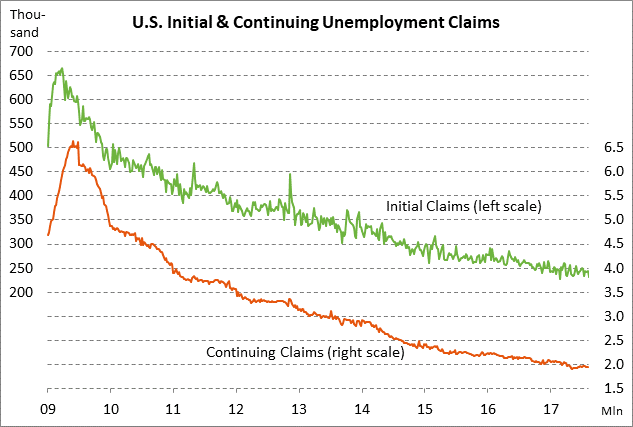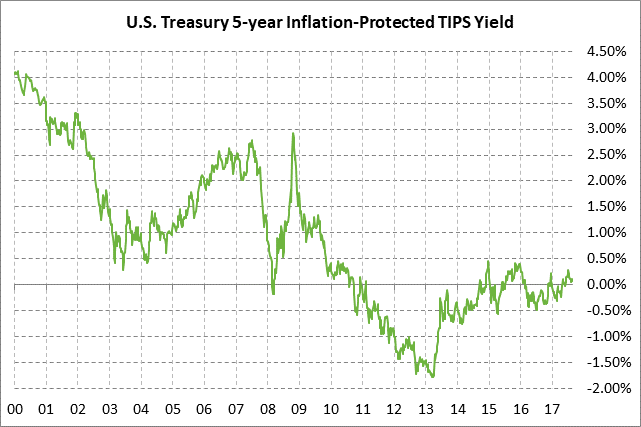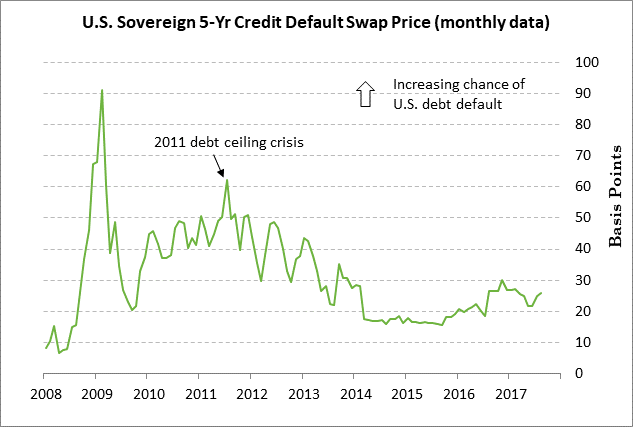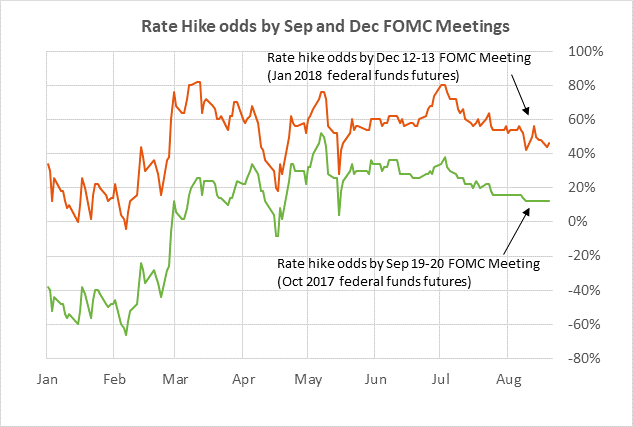- U.S. existing home sales remain in strong shape
- Unemployment claims expected to remain favorable
- 5-year TIPS auction to yield near 0.09%
- Ftch suggests U.S. credit rating will be downgraded if Treasury goes past x-date and relies on payment prioritization
- Jackson Hole conference begins today
U.S. existing home sales remain in strong shape — The market consensus is for today’s July existing home sales report to show a small +0.5% increase to 5.55 million, recovering part of June’s -1.8% decline to 5.52 million. However, Wednesday’s sharp decline in July new home sales of -9.4% provided a negative backdrop for today’s existing home sales report.
Existing home sales so far remain in strong shape at only -3.2% below the 10-year high of 5.70 million units posted in March. Home sales continue to see strength due to the favorable economy and low mortgage rates. However, home sales are also being undercut by (1) reduced affordability due to the sharp increase in home prices seen since the housing bust ended, and (2) the tight 4.3 month supply of homes available on the market, which is well below the long-term average of 7.0 months.
Unemployment claims expected to remain favorable — The initial and continuing unemployment claims series both remain in good shape, illustrating a strong labor market in which businesses are holding on tightly to their current employees. The initial claims series is only +5,000 above the 44-1/2 year low of 227,000 posted in February. Meanwhile, the continuing claims series is only +54,000 above the 29-year low of 1.899 million posted in May. The market consensus is for today’s initial unemployment claims report to show a +6,000 increase to 238,000, recovering half of last week’s -12,000 decline to 232,000. The consensus is for today’s continuing claims report to show a small decline of -3,000 to 1.950 million, adding to last week’s -3,000 decline to 1.953 million.
5-year TIPS auction to yield near 0.09% — The Treasury today will auction $14 billion of 5-year TIPS in the second reopening of April’s issue. The Treasury follows an annual pattern of selling a new 5-year TIPS issue in April and then reopening that issue in August and December. Today’s 5-year TIPS issue was trading at 0.09% in when-issued trading late Wednesday afternoon. The 12-auction averages are as follows: 2.46 bid cover, $37 million in non-competitive bids, 5.8 bp tail to the median yield, 14.2 bp tail to the low yield, and 49% taken at the high yield. The 5-year is mildly popular among foreign investors and central banks. Indirect bidders, a proxy for foreign buyers, have taken an average of 61.6% of the last twelve 5-year TIPS auctions, which is mildly above the average of 60.6% for all recent Treasury coupon auctions.
Fitch suggests U.S. credit rating will be downgraded if Treasury goes past x-date and relies on payment prioritization — Fitch on Wednesday essentially said it would downgrade America’s credit rating if Congress does not increase the debt ceiling and the Treasury is forced into prioritizing payments to avoid a sovereign debt default. Fitch essentially said that the Treasury’s inability to meet all of its financial obligations would not be compatible with a AAA credit rating.
The CBO estimates that the Treasury’s x-date will be in early to mid-October. On the x-date, the Treasury will essentially be in the position of a bankrupt company that cannot borrow money and does not have enough cash to meet all its obligations. The Treasury on the x-date would be faced with a decision of whether to use the rest of its cash and default on the remainder of its obligations, or use what incoming cash it has from tax revenues to prioritize payments for Treasury securities and perhaps for military salaries and Social Security, deferring other obligations. That would at least allow the Treasury to avoid a sovereign debt default, which could cause a systemic global financial crisis.
However, the Treasury has never attempted to prioritize payments before and it is not clear whether the Treasury has the legal or practical ability to carry out such a plan. The Treasury during the 2011 debt ceiling crisis reportedly had a secret plan to prioritize payments, but Congress raised the debt ceiling in time and the plan was never disclosed or activated.
Treasury Secretary Mnuchin insists that the Treasury cannot prioritize payments and will not need to because Congress will raise the debt ceiling in time. However, White House budget director Mulvaney earlier this year actively promoted the idea of prioritizing payments as a way to better use the debt ceiling as a bludgeon to meet political goals.
President Trump at his Arizona campaign rally on Tuesday night sparked some alarm in the markets by saying that he will force a U.S. government shutdown if the 2018 spending bill that must pass by Oct 1 does not have funding for his Mexican border wall. That boosted concern about a debt ceiling hike as well because Congress’ main option at this point is to roll a continuing resolution and a debt ceiling hike into a single package. But if Mr. Trump vetoes a continuing resolution for not having border wall spending, then the debt ceiling hike would be in jeopardy as well.
Jackson Hole conference begins today — The 4-day Jackson Hole monetary policy conference begins today. The main focus will be on speeches on Friday by Fed Chair Yellen (at 10 AM ET) and ECB President Draghi (at 3 PM ET). The markets are on guard for any policy hints from those speeches since both the Fed and the ECB are on the verge of major policy decisions. The ECB at its Sep 7 meeting may decide on a plan to taper QE during 2018. Meanwhile, the Fed at its Sep 19-20 meeting is expected to announce the start-date for its balance sheet normalization program, which could begin as soon as Oct 1. The markets will also be listening carefully for any Yellen-Draghi comments on the causes of low inflation. The market is discounting the odds of a Fed rate hike by December at only 44% mainly because of low inflation.





